Hassan Jameel Asghar
A Large-Scale Empirical Analysis of Custom GPTs' Vulnerabilities in the OpenAI Ecosystem
May 13, 2025Abstract:Millions of users leverage generative pretrained transformer (GPT)-based language models developed by leading model providers for a wide range of tasks. To support enhanced user interaction and customization, many platforms-such as OpenAI-now enable developers to create and publish tailored model instances, known as custom GPTs, via dedicated repositories or application stores. These custom GPTs empower users to browse and interact with specialized applications designed to meet specific needs. However, as custom GPTs see growing adoption, concerns regarding their security vulnerabilities have intensified. Existing research on these vulnerabilities remains largely theoretical, often lacking empirical, large-scale, and statistically rigorous assessments of associated risks. In this study, we analyze 14,904 custom GPTs to assess their susceptibility to seven exploitable threats, such as roleplay-based attacks, system prompt leakage, phishing content generation, and malicious code synthesis, across various categories and popularity tiers within the OpenAI marketplace. We introduce a multi-metric ranking system to examine the relationship between a custom GPT's popularity and its associated security risks. Our findings reveal that over 95% of custom GPTs lack adequate security protections. The most prevalent vulnerabilities include roleplay-based vulnerabilities (96.51%), system prompt leakage (92.20%), and phishing (91.22%). Furthermore, we demonstrate that OpenAI's foundational models exhibit inherent security weaknesses, which are often inherited or amplified in custom GPTs. These results highlight the urgent need for enhanced security measures and stricter content moderation to ensure the safe deployment of GPT-based applications.
Preempting Text Sanitization Utility in Resource-Constrained Privacy-Preserving LLM Interactions
Nov 18, 2024Abstract:Individuals have been increasingly interacting with online Large Language Models (LLMs), both in their work and personal lives. These interactions raise privacy issues as the LLMs are typically hosted by third-parties who can gather a variety of sensitive information about users and their companies. Text Sanitization techniques have been proposed in the literature and can be used to sanitize user prompts before sending them to the LLM. However, sanitization has an impact on the downstream task performed by the LLM, and often to such an extent that it leads to unacceptable results for the user. This is not just a minor annoyance, with clear monetary consequences as LLM services charge on a per use basis as well as great amount of computing resources wasted. We propose an architecture leveraging a Small Language Model (SLM) at the user-side to help estimate the impact of sanitization on a prompt before it is sent to the LLM, thus preventing resource losses. Our evaluation of this architecture revealed a significant problem with text sanitization based on Differential Privacy, on which we want to draw the attention of the community for further investigation.
On the Robustness of Malware Detectors to Adversarial Samples
Aug 05, 2024


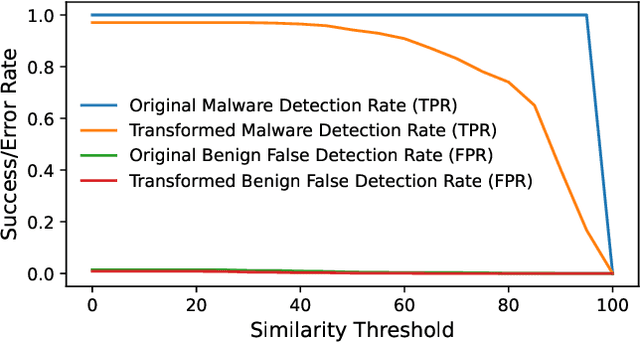
Abstract:Adversarial examples add imperceptible alterations to inputs with the objective to induce misclassification in machine learning models. They have been demonstrated to pose significant challenges in domains like image classification, with results showing that an adversarially perturbed image to evade detection against one classifier is most likely transferable to other classifiers. Adversarial examples have also been studied in malware analysis. Unlike images, program binaries cannot be arbitrarily perturbed without rendering them non-functional. Due to the difficulty of crafting adversarial program binaries, there is no consensus on the transferability of adversarially perturbed programs to different detectors. In this work, we explore the robustness of malware detectors against adversarially perturbed malware. We investigate the transferability of adversarial attacks developed against one detector, against other machine learning-based malware detectors, and code similarity techniques, specifically, locality sensitive hashing-based detectors. Our analysis reveals that adversarial program binaries crafted for one detector are generally less effective against others. We also evaluate an ensemble of detectors and show that they can potentially mitigate the impact of adversarial program binaries. Finally, we demonstrate that substantial program changes made to evade detection may result in the transformation technique being identified, implying that the adversary must make minimal changes to the program binary.
Practical, Private Assurance of the Value of Collaboration
Oct 04, 2023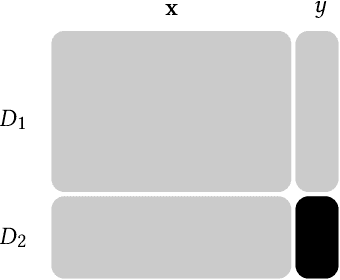



Abstract:Two parties wish to collaborate on their datasets. However, before they reveal their datasets to each other, the parties want to have the guarantee that the collaboration would be fruitful. We look at this problem from the point of view of machine learning, where one party is promised an improvement on its prediction model by incorporating data from the other party. The parties would only wish to collaborate further if the updated model shows an improvement in accuracy. Before this is ascertained, the two parties would not want to disclose their models and datasets. In this work, we construct an interactive protocol for this problem based on the fully homomorphic encryption scheme over the Torus (TFHE) and label differential privacy, where the underlying machine learning model is a neural network. Label differential privacy is used to ensure that computations are not done entirely in the encrypted domain, which is a significant bottleneck for neural network training according to the current state-of-the-art FHE implementations. We prove the security of our scheme in the universal composability framework assuming honest-but-curious parties, but where one party may not have any expertise in labelling its initial dataset. Experiments show that we can obtain the output, i.e., the accuracy of the updated model, with time many orders of magnitude faster than a protocol using entirely FHE operations.
On the Adversarial Inversion of Deep Biometric Representations
Apr 12, 2023Abstract:Biometric authentication service providers often claim that it is not possible to reverse-engineer a user's raw biometric sample, such as a fingerprint or a face image, from its mathematical (feature-space) representation. In this paper, we investigate this claim on the specific example of deep neural network (DNN) embeddings. Inversion of DNN embeddings has been investigated for explaining deep image representations or synthesizing normalized images. Existing studies leverage full access to all layers of the original model, as well as all possible information on the original dataset. For the biometric authentication use case, we need to investigate this under adversarial settings where an attacker has access to a feature-space representation but no direct access to the exact original dataset nor the original learned model. Instead, we assume varying degree of attacker's background knowledge about the distribution of the dataset as well as the original learned model (architecture and training process). In these cases, we show that the attacker can exploit off-the-shelf DNN models and public datasets, to mimic the behaviour of the original learned model to varying degrees of success, based only on the obtained representation and attacker's prior knowledge. We propose a two-pronged attack that first infers the original DNN by exploiting the model footprint on the embedding, and then reconstructs the raw data by using the inferred model. We show the practicality of the attack on popular DNNs trained for two prominent biometric modalities, face and fingerprint recognition. The attack can effectively infer the original recognition model (mean accuracy 83\% for faces, 86\% for fingerprints), and can craft effective biometric reconstructions that are successfully authenticated with 1-vs-1 authentication accuracy of up to 92\% for some models.
Those Aren't Your Memories, They're Somebody Else's: Seeding Misinformation in Chat Bot Memories
Apr 06, 2023



Abstract:One of the new developments in chit-chat bots is a long-term memory mechanism that remembers information from past conversations for increasing engagement and consistency of responses. The bot is designed to extract knowledge of personal nature from their conversation partner, e.g., stating preference for a particular color. In this paper, we show that this memory mechanism can result in unintended behavior. In particular, we found that one can combine a personal statement with an informative statement that would lead the bot to remember the informative statement alongside personal knowledge in its long term memory. This means that the bot can be tricked into remembering misinformation which it would regurgitate as statements of fact when recalling information relevant to the topic of conversation. We demonstrate this vulnerability on the BlenderBot 2 framework implemented on the ParlAI platform and provide examples on the more recent and significantly larger BlenderBot 3 model. We generate 150 examples of misinformation, of which 114 (76%) were remembered by BlenderBot 2 when combined with a personal statement. We further assessed the risk of this misinformation being recalled after intervening innocuous conversation and in response to multiple questions relevant to the injected memory. Our evaluation was performed on both the memory-only and the combination of memory and internet search modes of BlenderBot 2. From the combinations of these variables, we generated 12,890 conversations and analyzed recalled misinformation in the responses. We found that when the chat bot is questioned on the misinformation topic, it was 328% more likely to respond with the misinformation as fact when the misinformation was in the long-term memory.
Unintended Memorization and Timing Attacks in Named Entity Recognition Models
Nov 04, 2022



Abstract:Named entity recognition models (NER), are widely used for identifying named entities (e.g., individuals, locations, and other information) in text documents. Machine learning based NER models are increasingly being applied in privacy-sensitive applications that need automatic and scalable identification of sensitive information to redact text for data sharing. In this paper, we study the setting when NER models are available as a black-box service for identifying sensitive information in user documents and show that these models are vulnerable to membership inference on their training datasets. With updated pre-trained NER models from spaCy, we demonstrate two distinct membership attacks on these models. Our first attack capitalizes on unintended memorization in the NER's underlying neural network, a phenomenon NNs are known to be vulnerable to. Our second attack leverages a timing side-channel to target NER models that maintain vocabularies constructed from the training data. We show that different functional paths of words within the training dataset in contrast to words not previously seen have measurable differences in execution time. Revealing membership status of training samples has clear privacy implications, e.g., in text redaction, sensitive words or phrases to be found and removed, are at risk of being detected in the training dataset. Our experimental evaluation includes the redaction of both password and health data, presenting both security risks and privacy/regulatory issues. This is exacerbated by results that show memorization with only a single phrase. We achieved 70% AUC in our first attack on a text redaction use-case. We also show overwhelming success in the timing attack with 99.23% AUC. Finally we discuss potential mitigation approaches to realize the safe use of NER models in light of the privacy and security implications of membership inference attacks.
A Differentially Private Framework for Deep Learning with Convexified Loss Functions
Apr 03, 2022
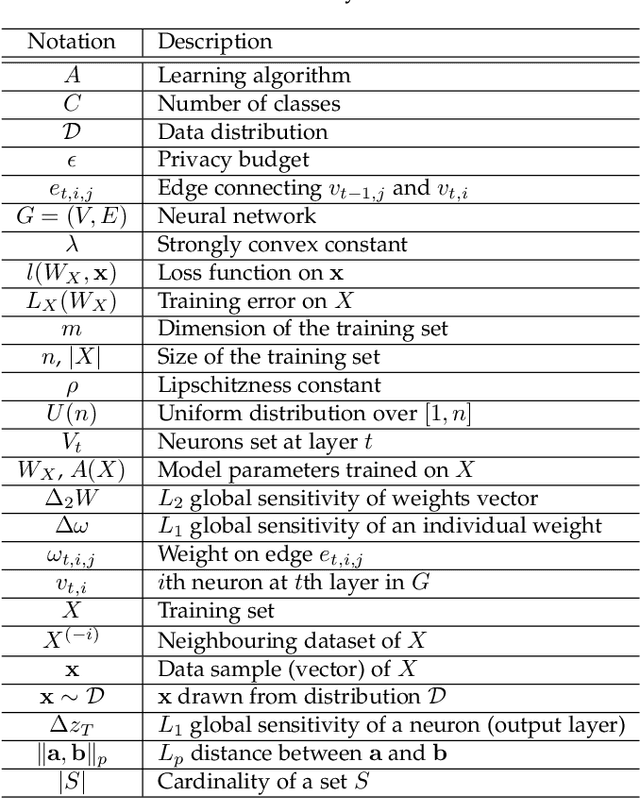
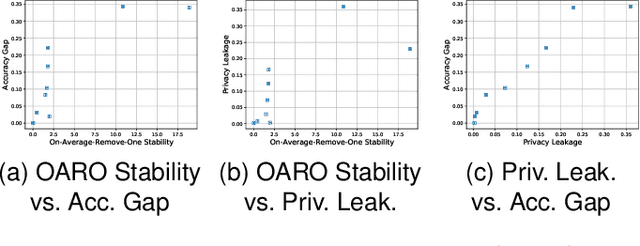
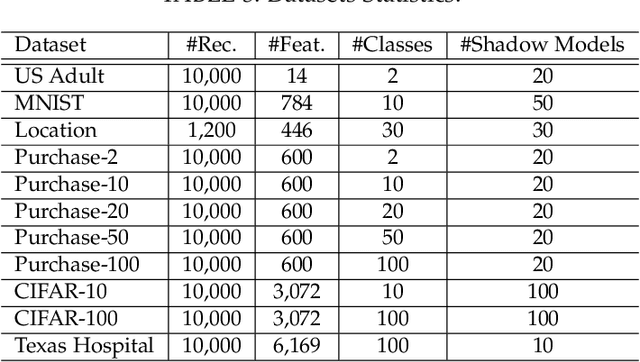
Abstract:Differential privacy (DP) has been applied in deep learning for preserving privacy of the underlying training sets. Existing DP practice falls into three categories - objective perturbation, gradient perturbation and output perturbation. They suffer from three main problems. First, conditions on objective functions limit objective perturbation in general deep learning tasks. Second, gradient perturbation does not achieve a satisfactory privacy-utility trade-off due to over-injected noise in each epoch. Third, high utility of the output perturbation method is not guaranteed because of the loose upper bound on the global sensitivity of the trained model parameters as the noise scale parameter. To address these problems, we analyse a tighter upper bound on the global sensitivity of the model parameters. Under a black-box setting, based on this global sensitivity, to control the overall noise injection, we propose a novel output perturbation framework by injecting DP noise into a randomly sampled neuron (via the exponential mechanism) at the output layer of a baseline non-private neural network trained with a convexified loss function. We empirically compare the privacy-utility trade-off, measured by accuracy loss to baseline non-private models and the privacy leakage against black-box membership inference (MI) attacks, between our framework and the open-source differentially private stochastic gradient descent (DP-SGD) approaches on six commonly used real-world datasets. The experimental evaluations show that, when the baseline models have observable privacy leakage under MI attacks, our framework achieves a better privacy-utility trade-off than existing DP-SGD implementations, given an overall privacy budget $\epsilon \leq 1$ for a large number of queries.
On the (In)Feasibility of Attribute Inference Attacks on Machine Learning Models
Mar 12, 2021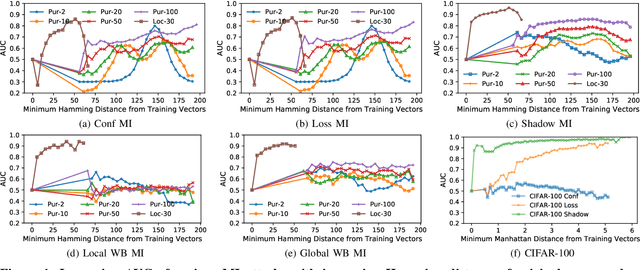
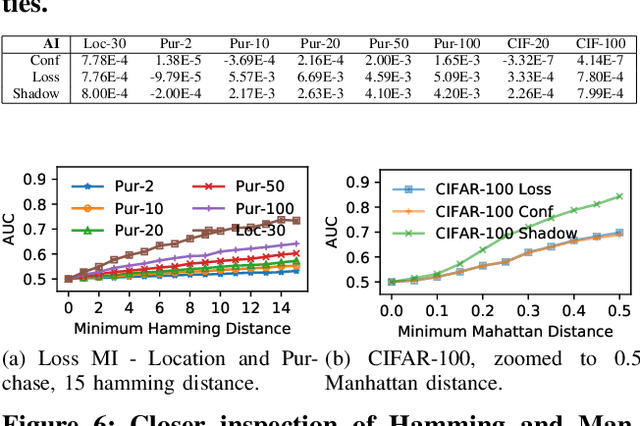
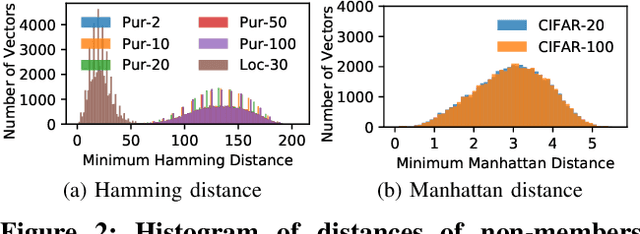
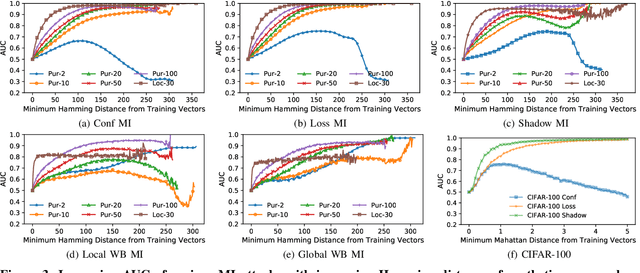
Abstract:With an increase in low-cost machine learning APIs, advanced machine learning models may be trained on private datasets and monetized by providing them as a service. However, privacy researchers have demonstrated that these models may leak information about records in the training dataset via membership inference attacks. In this paper, we take a closer look at another inference attack reported in literature, called attribute inference, whereby an attacker tries to infer missing attributes of a partially known record used in the training dataset by accessing the machine learning model as an API. We show that even if a classification model succumbs to membership inference attacks, it is unlikely to be susceptible to attribute inference attacks. We demonstrate that this is because membership inference attacks fail to distinguish a member from a nearby non-member. We call the ability of an attacker to distinguish the two (similar) vectors as strong membership inference. We show that membership inference attacks cannot infer membership in this strong setting, and hence inferring attributes is infeasible. However, under a relaxed notion of attribute inference, called approximate attribute inference, we show that it is possible to infer attributes close to the true attributes. We verify our results on three publicly available datasets, five membership, and three attribute inference attacks reported in literature.
On the Resilience of Biometric Authentication Systems against Random Inputs
Jan 24, 2020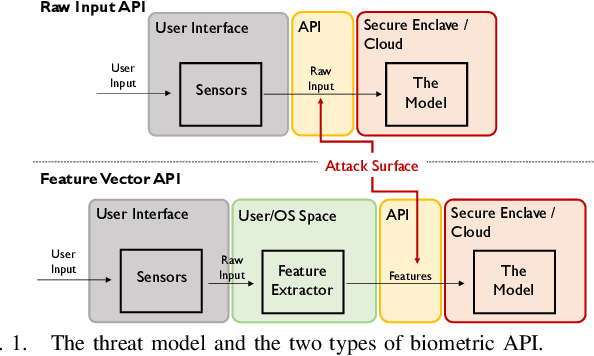

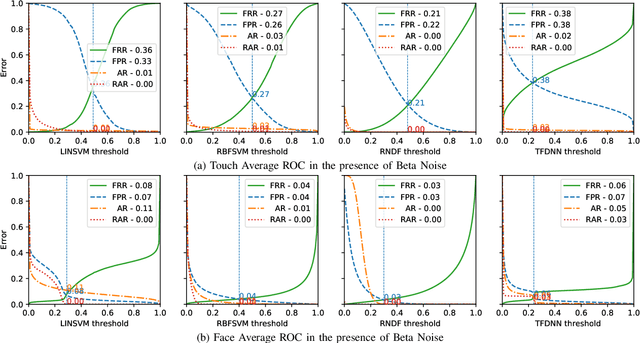

Abstract:We assess the security of machine learning based biometric authentication systems against an attacker who submits uniform random inputs, either as feature vectors or raw inputs, in order to find an accepting sample of a target user. The average false positive rate (FPR) of the system, i.e., the rate at which an impostor is incorrectly accepted as the legitimate user, may be interpreted as a measure of the success probability of such an attack. However, we show that the success rate is often higher than the FPR. In particular, for one reconstructed biometric system with an average FPR of 0.03, the success rate was as high as 0.78. This has implications for the security of the system, as an attacker with only the knowledge of the length of the feature space can impersonate the user with less than 2 attempts on average. We provide detailed analysis of why the attack is successful, and validate our results using four different biometric modalities and four different machine learning classifiers. Finally, we propose mitigation techniques that render such attacks ineffective, with little to no effect on the accuracy of the system.
 Add to Chrome
Add to Chrome Add to Firefox
Add to Firefox Add to Edge
Add to Edge